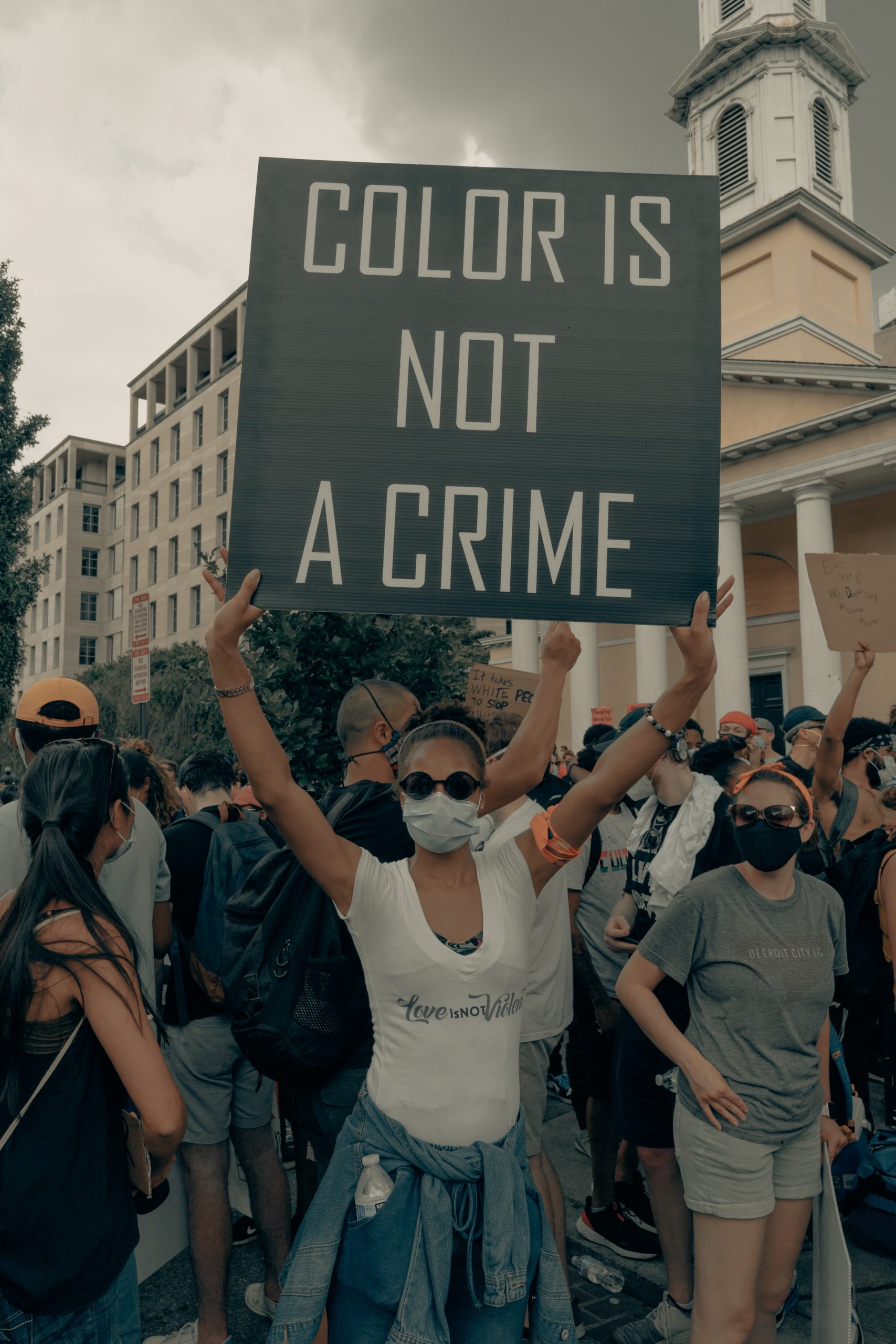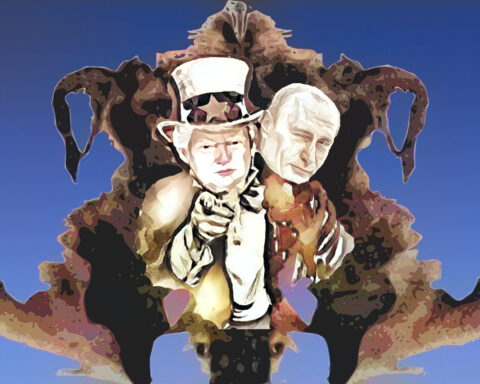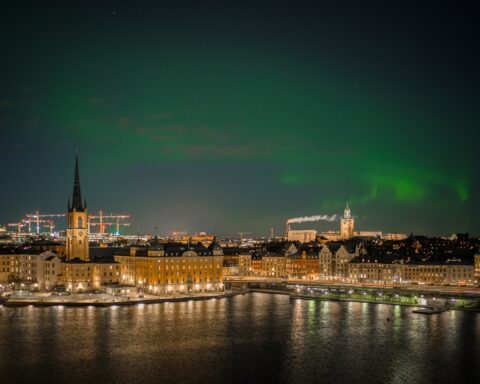
RACISM. Peter Stewart is writing the first part of his essay about racism in the USA. While Part I is focusing on understanding feelings about race in the individual better, part II is going to be about examining the reality of American systemic racism and its historical background.
‘When I use a word,’ Humpty Dumpty said in rather a scornful tone, ‘it means just what I choose it to mean — neither more nor less.’ ‘The question is,’ said Alice, ‘whether you CAN make words mean so many different things.’ ‘The question is,’ said Humpty Dumpty, ‘which is to be master — that’s all.’
– Lewis Carrol, Through the Looking Glass
In a TV interview where Rudy Giuliani was defending Trump on one of the many occasions when he was under fire for racist statements, the former mayor of New York vehemently denied that Trump was a racist, then quickly leaned back with an introspective look, as if he had just realized something, and said: “It’s a terrible thing, really, to call somebody a racist!”
Never mind that it is a much more terrible thing actually to be a racist. But nevertheless, he somehow hit the nail on the head: nobody wants to be called a racist. Or think of himself as a racist. Even white supremacists are likely to insist that they’re not racists, they just want to protect the “white” race.
In fact, it may be one of the lasting effects of the civil rights movement that racism has become one of the biggest taboos in present-day America.
I have divided my exploration of racism in America into two parts. Part I is my modest attempt to understand feelings about race in the individual better, while part II will examine the reality of American systemic racism and its historical background. The impetus for these articles is the consternation I have felt for a long time that so many people, mainly conservatives, can deny that the United States is a racist country, or at the very least deeply soaked in racism. Even more, how they can deny the obvious racist messaging of president Trump with all the despicable things coming out of his mouth and despite the testimony of so many who have worked for him.
Just to pick one thing out of the swamp of Trump’s brain, the very thing that launched his political career: the “birther” conspiracy theory. This was the false claim that Barack Obama wasn’t really born in the United States and therefore was ineligible to be president. It is plain to see how this was irresistible to somebody who was incapable of accepting that a black man could be his superior in nearly every way: more intelligent, better educated, more eloquent, more respected, a better man and father, and above all, more powerful. An added benefit to birtherism was that it could be exploited to Trump’s own advantage, especially because it was so divisive.
It is also easy to understand the psychology of the followers who latched onto the conspiracy theory that Trump was promoting. All your life, the implicit promise has been that blacks will always be inferior to you, that you can never be on the lowest rung of society. You have over the years gotten used to seeing some blacks as successful athletes, entertainers, businessmen or professionals, but now you suddenly see a black man in the position of president of your country, the “most powerful man in the world”. In your mind, something just has to be wrong with this picture; it simply cannot be legitimate.
It seems that it would require some formidable mental acrobatics to deny that this is racism, but most likely, it happens without any serious thought. The threat against your self-image is averted by some quick associations. You have seen the old racism on TV, the deteriorated news footage, grainy images of burning crosses, beatings, lynchings, faces twisted in hatred. You don’t relate to that. You don’t hate blacks. You have no desire to shoot or beat anybody. Not even to call them the hurtful “n-word.” How can you be a racist?
Slavery has been called America’s original sin so often that it has become a platitude. Slavery also lay at the root of the ideology of racism. To justify slavery and colonialism, it became necessary to create a framework of racism. Most humans need to be able to think of themselves as good, moral people, their actions have to be defensible. Accordingly, these “others”, the slaves, had to be inferior, not fit to govern their own lives, not really fully human, otherwise, slavery would simply have been too terrible to contemplate.
Indeed, the original U.S. constitution defined blacks as 3/5ths of a person, solely for the purpose of awarding more congressional seats to the Southern states. It certainly wasn’t the case that blacks were able to cast so much as 3/5ths of a vote.
Slavery was based on skin color, so to enforce the distance between people of European origin and the “black” slaves, this was also when the concept of “white” people was invented. The immigrants who flooded the shores of America did not identify themselves as “white”, they had never even heard of this concept. They were English, Scottish, Dutch, French, German and Irish. Or they might simply have thought of themselves as Geordie boys or Shropshire lads, Alsatians, Bretons, Bavarians, or Highlanders, in a time when nation-states were only just getting established.
In fact, the concept of race is not based on biology. There is no gene or cluster of genes common to all blacks or all whites. It is generally accepted in science that it is a social construct to protect a power hierarchy. James Baldwin once observed that “no one was white before he/she came to America”, but it is equally true that nobody was “black” before he/she came to America. There are no blacks in Africa.
“Difference in hue and hair is old. But the belief in the preeminence of hue and hair, the notion that these factors can correctly organize society and that they signify deeper attributes, which are indelible – this is the new idea at the heart of these people who have been brought up hopelessly, tragically, deceitfully, to believe that they are white.”
— Ta-Nehisi Coates, Between the World and Me
Race is not a biological reality, yet it is difficult to convince people that this is so. The concept is woven deeply into history, and people have come to identify strongly with their imposed or adopted and evolving identities in the ongoing struggle over the definition of race and who gets to define it.
Yes, race is not real, but it is impossible to escape. In a country where skin and hair color formed the very basis for how society was structured, race is still everywhere. It can even be for the most benevolent of purposes, as when official government forms ask you to (optionally) self-identify as White, Black, Hispanic, Asian, or Other. The intent is to measure and ensure equal treatment, yet on another level, it still ends up validating the social fiction of race as something real.
Thankfully, racial stereotypes in popular entertainment are no longer as extreme as in the days of “Gone with the Wind” and Stepin Fetchit, but they are still pervasive. The little black “lawn jockeys” are gone, but the stereotypes can still be found on packages of rice and the bottle of syrup for your breakfast pancakes, even though these specific examples are supposedly in the process of being “rebranded”.
In films, you see it in the way “blacks” are more likely to be found in the roles of servants and subordinate roles. Maybe the sidekick, but rarely the hero. In everyday life, you see it in how the female “black” doctor is presumed to be a nurse and brusquely told to bring the doctor. Political memes often rely on racist stereotypes of blacks as lazy, less industrious and less intelligent. President Obama was frequently criticized for playing too much golf by the same people who now happily accept any amount of golfing by Trump.
It is also a fact that the type of crimes that are sensationalized on the local TV news are usually committed by the underclass, an underclass that in this country is more likely to be “black”. On the other hand, white-collar crime rarely makes the news, unless it’s particularly egregious. It follows that we so often see the images of “black” faces as perpetrators of violent crimes that even blacks can be instinctively afraid of a group of dark-skinned young men they encounter on the street.
One significant measure of the degree of racism can be found in how quickly many recent immigrants absorb the prejudices of the society around them, the ranking of the various groups, the implicit prejudices. It is natural to want to fit in and find your place in the social hierarchy of your newly adopted country, and the ticket to escaping the lowest rung has always been to distance yourself from the “blacks”.
Historically, if you were an Irish or Italian immigrant, you established your “whiteness” by putting down blacks, sometimes violently, but currently, it is not uncommon to find bigoted attitudes among newly arrived Chinese, Koreans, and Indians who did not bring these attitudes with them from their home countries. It is quite similar to how every child quickly sees who the school bully is and, in most cases, makes very sure not to get on his bad side, perhaps even taking part in tormenting the weak so as not to become victims themselves.
Could it be that all this is simply an effect of a system where the underclass, due to a history of segregation and repression, has become conveniently “color-coded”? The problem with this theory is that it ignores the deeper history. When slavery first began in this country, there was little difference between the African slave who had been brought over in shackles and the indentured servants who sold their labor for a specific number of years to pay for their passage to the New World. In fact, initially, many Africans who were brought to America weren’t even slaves but were treated as indentured servants.
The aristocracy of plantation owners, made wealthy through huge land grants from the king, soon discovered the inherent risks in this situation. As early as in 1675, Nathaniel Bacon, a white property owner in Jamestown, Virginia, managed to unite slaves, indentured servants and poor whites in a violent rebellion to overthrow the planter class.
After the Bacon rebellion had been crushed, the planters abandoned their reliance on indentured servants in favor of slaves, preferably imported directly from Africa so that they would be less likely to find common cause with poor whites. In a pattern that would be repeated over and over again in American history, they also extended special privileges to poor whites so as to drive a wedge between them and the black slaves. They were allowed to acquire land previously held by Native Americans and to form local militias to police the slaves. Legal barriers were also created to guarantee that free labor wouldn’t have to compete with slave labor. Poor whites now had a personal stake in preserving the race-based system of slavery.
This constituted the beginning of a caste system, a rigid social order, which would become cemented over the centuries. The function of a caste system is to strictly define the privileges of each stratum in society, making each group jealously defend its position against all challenges from below. Your identity in the system becomes your most valuable possession, and any attempt to break down this order becomes a threat to your own social position, and your ability to make a decent living.
Slavery officially ended in every state by June 1865, but the wounds of a crime of this magnitude run very deep. On the one hand, you have the suffering of the slaves: the back-breaking labor, the harsh living conditions, the physical abuse, the merciless whippings, the frequent rapes, the repeated separation of families when parents and children were sold off to different owners. How long does it take for scabs to form over these psychological wounds, how long for the scars to fade, how long before the hurt stops being transmitted from generation to generation?
It has often been said that the South lost the war but won the peace. Slavery was replaced with a system of sharecropping and chain gangs made up of black men who could be arrested and convicted on the most spurious of charges so that the system of cheap labor that had made the Southern aristocracy so very rich could be kept in force for another century.
On the other hand, while it may be incongruous to compare the centuries-deep wounds of the slaves and their descendants with any psychological damage to the “whites”, it seems clear that whites also suffered distortions and dysfunctional mindsets. Racism was never in the best interest of the poor whites; they were not the ones who had gotten rich from slave labor. But a racist ideology kept them from rebelling because there was always a class that was guaranteed to be lower than them. Racism kept the poor “whites” in their place, just as surely as it kept the “blacks” in theirs.
The certain knowledge that they were better and that “blacks” were inferior was instilled in them from their earliest childhood. It was everywhere around them, enmeshed in every strand of society. From the ever-present segregation to the things that they were taught in school and in church. Only a deep fear that the very fabric of life was unravelling can explain the virulent hatred twisting the faces of Southerners sixty years ago as they were trying to prevent school integration or defend segregation at lunch counters, in schools and on public transportation.
It is undeniable that things have changed for the better since the mid-sixties and the victories of the Civil Rights Movement. The Civil Rights Act of 1964 ended segregation in public places and banned employment discrimination on the basis of race, color, religion, sex or national origin. The Voting Rights Act of 1965 (with amendments over the following decades) suspended the use of literacy tests and other voter disqualification devices. The Fair Housing Act of 1968 prohibited discrimination in the sale and rental of approximately 80% of the housing in the U.S.
In the minds of many, the success of the Civil Rights Movement has also meant that the problem of racism is a thing of the past and that we now live in a “post-racial” society. Up until just a few years ago, a large majority of whites thought that race relations were generally good, a view shared by 74% of whites in 2007. Obviously, the Black Lives Matter movement has uncovered deep-seated problems, and these numbers have changed over the last few years. It is notable, however, that Republicans have generally had a much rosier view of race relations than Democrats. Unsurprisingly, most blacks have seen things in a much less positive light.
Still, even as perceptions of the degree of improvement may differ, many gains have been made. The naked hatred of the past really has faded away. There are no longer white race riots like the one that destroyed the “Black Wall Street” district in Tulsa, Oklahoma in 1921. Hate crimes still happen, but lynchings are no more a public spectacle. Additionally, active measures were put in place to redress historical injustices, and many businesses make serious efforts to foster diversity.
However, the changes that were made to correct the imbalances of the past were not without cost, and these costs were disproportionately borne by the lower and middle classes. The progressive elites who were the main supporters of the new policies were largely insulated from the effects of school integration and busing. Affirmative action policies — “positively supporting members of disadvantaged or underrepresented groups that have previously suffered discrimination” — have been more likely to affect the middle-class college applicant than somebody whose parents are alumni of an Ivy League university.
The effects were perhaps especially felt by white men who from the 1970’s found themselves competing with women, blacks and immigrants for jobs and advancement. It was no longer a given that they would have a better life than their parents if they just “worked hard and played by the rules”. Suddenly it seemed to them that others were getting an unearned ticket to jump ahead of them in line.
Naturally, there was a backlash of resentment. But no problem becomes truly inflamed until politicians start exploiting it for their own benefit. The very act of exploitation deepens divisions and puts them into stronger relief. The most striking example is Reagan’s famous (and almost completely fictitious) Welfare Queen who supposedly “used 80 names, 30 addresses, 15 telephone numbers to collect food stamps, Social Security, veterans’ benefits for four nonexistent deceased veteran husbands, as well as welfare. Her tax-free cash income alone has been running $150,000 a year.” The white voters heard the message, and the implied allegation was crystal clear.
These types of memes act as a form of conditioning so that in the end any attack on the welfare system is perceived as an attack on “those people”, who are seen as undeserving, and not on the poor whites in Republican states who in reality are the main beneficiaries of these programs. It can lead a fatally ill man who would have benefited greatly from the expansion of the Medicaid program available under Obamacare to fervently oppose his home state opting in, with the motivation that “I don’t want my money to go to some damn welfare queen!”
In exactly the same way, “Law and Order” campaign slogans have been clearly understood to be aimed at “those people”, something that also becomes quite evident when you look at the real-world effects in the form of incarceration rates. “Black people comprise 13 percent of the U.S. population and are consistently documented by the U.S. government to use drugs at similar rates to people of other races (The Drug War, Mass Incarceration and Race, January 2018, The Drug Policy Alliance). But Black people comprise 29 percent of those arrested for drug law violations and nearly 40 percent of those incarcerated in state or federal prison for drug law violations.”
Clearly, when politicians use policies based on racial resentment to sway voters and win elections, it can have some very real and harmful consequences. It must be acknowledged that it may be difficult for whites in economically stagnant areas to perceive that they are the beneficiaries of much white privilege. It can be challenging to notice things that are most conspicuous for their absence: not being stopped by the police on the slimmest of pretexts while driving, not being followed around a shop by the store detective, not automatically be assumed to be somewhere you’re not supposed to be, etc.
Nonetheless, racial resentment in combination with the belief that we live in a post-racial society can express itself in some rather curious ways. Any mention of racial disparities tends to be dismissed as “playing the race card” for some unfair political benefit. But if there is no longer any discrimination and white privilege doesn’t exist, how is it that many still identify so strongly with being white that any mention of white dominance instantly is perceived as a personal attack? Merely calling out white prejudice or white privilege can be denounced as “reverse racism”. In other words, if you feel that many whites still harbor racist views, you are just a reverse racist because you are prejudiced against whites!
Even those who insist that we live in a post-racial society and that we should be “color-blind”, find it impossible to deny that there is still some racism. If slavery was America’s original sin, in the minds of many, racism has come to be seen in the same light, as a flaw, a “sin” of the individual, true to the American tendency to see issues on an individual level, rather than as symptoms of larger, collective forces. It follows that if you find yourself harboring bigoted thoughts, you should try to resist the temptation to think that way.
But racism is not a sin, it is a belief. Racism is defined as: “a belief that race is the primary determinant of human traits and capacities and that racial differences produce an inherent superiority of a particular race.” (Merriam-Webster) When something is a sin, like gluttony or greed, you may, despite all your best intentions still be tempted to relapse into sin. Realizing that your belief was wrong and accordingly changing what you believe is something completely different. If I used to believe that the world is flat, but now have become convinced that it is indeed round, why would I be tempted to believe once again that it is flat?
There is evidently a struggle over who gets to define what the word “racism” means and what it doesn’t mean. Is racism gone if the “Whites Only” signs are no longer there? Is racial resentment a facet of racism, or should the word only apply to real racial animosity? If you benefit from a racist system and don’t try to change it, does that mean that you too are a racist? Who gets to decide these things? Who is to be master?
By redefining racism as only referring to real hatred, it becomes easier to overlook the lingering, systemic effects of racist history. There are many examples, and the following are just a few:
- People with “white” sounding names, like Bradley and Emily, get twice as many callbacks when submitting job applications as people with “black” sounding names, like Darnell and Shanice. (The same resumé, only personal information changed.)
- When the U.S. housing bubble burst in the crash of 2008, it was revealed that blacks often had been steered into what the banks call “subprime” loans with high interest and/or balloon payments, even when their credit score and income qualified them for much better mortgage loans.
- Schools are more segregated today than they were in the 1970s.
- The income gap between black and white households is also pretty much unchanged since 1970.
- The average net worth of white households is approximately 20 times as much as that of black households.
- Black women across the income spectrum and from all walks of life are dying from preventable pregnancy-related complications at three to four times the rate of non-Hispanic white women.
- The death rate for black infants is twice that of infants born to non-Hispanic white mothers.
- If you are black and experiencing a heart attack, there is a much higher risk that you will be told to go home and take a couple of aspirins, even more so if you’re a woman.
- A black man is 2.5 times more likely to be shot by a cop than a white man. As the passion of the Black Lives Matter movement shows, this may only be the tip of an immense iceberg of daily harassment and intimidation, most intensely felt by young people.
We may also wonder if resentment and prejudice is all that is left? Is there almost no hatred anymore? The facts tell a different story. The number of hate groups has been steadily growing over the last twenty years, reaching a record high of 1,020 in 2018. Personal attacks motivated by bias or prejudice reached a 16-year high in 2018, according to the F.B.I.
The change in attitudes since Trump was elected is also not encouraging. 65% of respondents to a survey by Pew Research Center say that it has become more common for people to express racist or racially insensitive views – and 45% think that it has become more acceptable to express such views.
Is this because Trump has given people permission to express the prejudice that they have been feeling all along, freeing them from “political correctness”? Several studies have found that attitudes on race were one of the most important factors driving support for Trump. Much of this support may, of course, be founded in “mere” racial resentment or some level of anxiety about the diminishing influence of whites. But there are worrying signs that some of it may be worse and that those attitudes may be hardening. It is deeply troubling that 35% of Trump’s Twitter followers in 2016 also followed white nationalists like former KKK leader David Duke.
It is also worrying that Trump’s whole re-election strategy in 2020 seems to be based on fanning the flames and provoking unrest in order to increase white fear and capitalize on it as the “Law and Order” candidate. It appears to be all about energizing a small, older, white base and bringing out that vote while making no effort to appeal to other demographics. The few black conservatives who are paraded as Trump supporters, for whatever reasons of their own, are not meant to sway black voters, but to signal to white voters who may find themselves on the fence, uneasy about his perceived racism, that it’s ok to vote for Trump, he is not really the racist that people say he is.
The hope for the future is that the younger generation, the ones that Trump doesn’t even try to reach, is much more diverse (45% non-white) and holds very different views on race issues. For example, 51 percent of white adults between the ages of 18 and 30 support the Black Lives Matter movement. We can only hope that Trumpism doesn’t do irreparable damage before it fades away.
—
In part II, we will take a closer look at systemic racism and its historical background.

info@opulens.se








